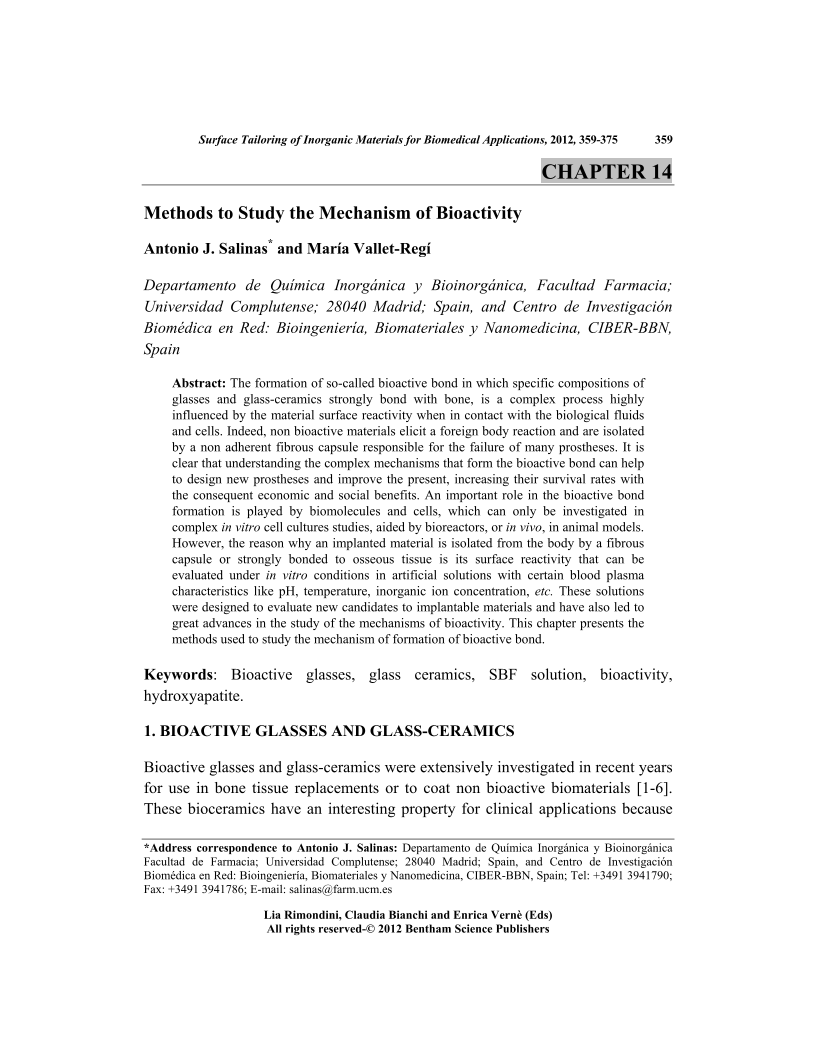Methods to Study the Mechanism of Bioactivity

- Authors: Antonio J. Salinas1, María Vallet-Regí
-
View Affiliations Hide Affiliations1 Departamento de Qumica Inorgnica y Bioinorgnica, Facultad Farmacia;Universidad Complutense; 28040 Madrid; Spain,
- Source: Surface Tailoring of Inorganic Materials for Biomedical Applications , pp 359-375
- Publication Date: October 2012
- Language: English
Methods to Study the Mechanism of Bioactivity, Page 1 of 1
< Previous page | Next page > /docserver/preview/fulltext/9781608054626/chapter-14-1.gif
The formation of so-called bioactive bond in which specific compositions of glasses and glass-ceramics strongly bond with bone, is a complex process highly influenced by the material surface reactivity when in contact with the biological fluids and cells. Indeed, non bioactive materials elicit a foreign body reaction and are isolated by a non adherent fibrous capsule responsible for the failure of many prostheses. It is clear that understanding the complex mechanisms that form the bioactive bond can help to design new prostheses and improve the present, increasing their survival rates with the consequent economic and social benefits. An important role in the bioactive bond formation is played by biomolecules and cells, which can only be investigated in complex in vitro cell cultures studies, aided by bioreactors, or in vivo, in animal models. However, the reason why an implanted material is isolated from the body by a fibrous capsule or strongly bonded to osseous tissue is its surface reactivity that can be evaluated under in vitro conditions in artificial solutions with certain blood plasma characteristics like pH, temperature, inorganic ion concentration, etc. These solutions were designed to evaluate new candidates to implantable materials and have also led to great advances in the study of the mechanisms of bioactivity. This chapter presents the methods used to study the mechanism of formation of bioactive bond.
-
From This Site
/content/books/9781608054626.chapter-14dcterms_subject,pub_keyword-contentType:Journal -contentType:Figure -contentType:Table -contentType:SupplementaryData105

